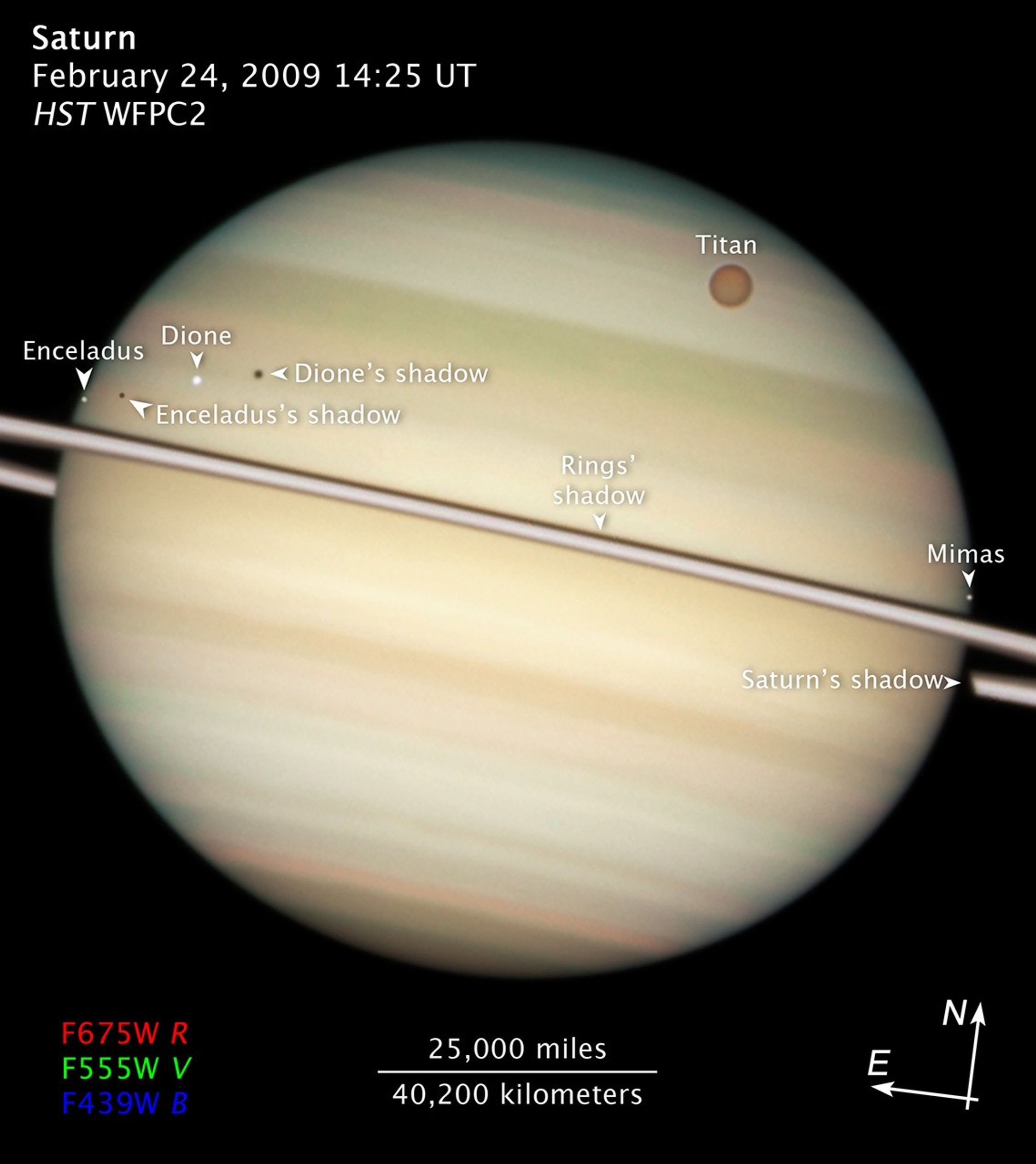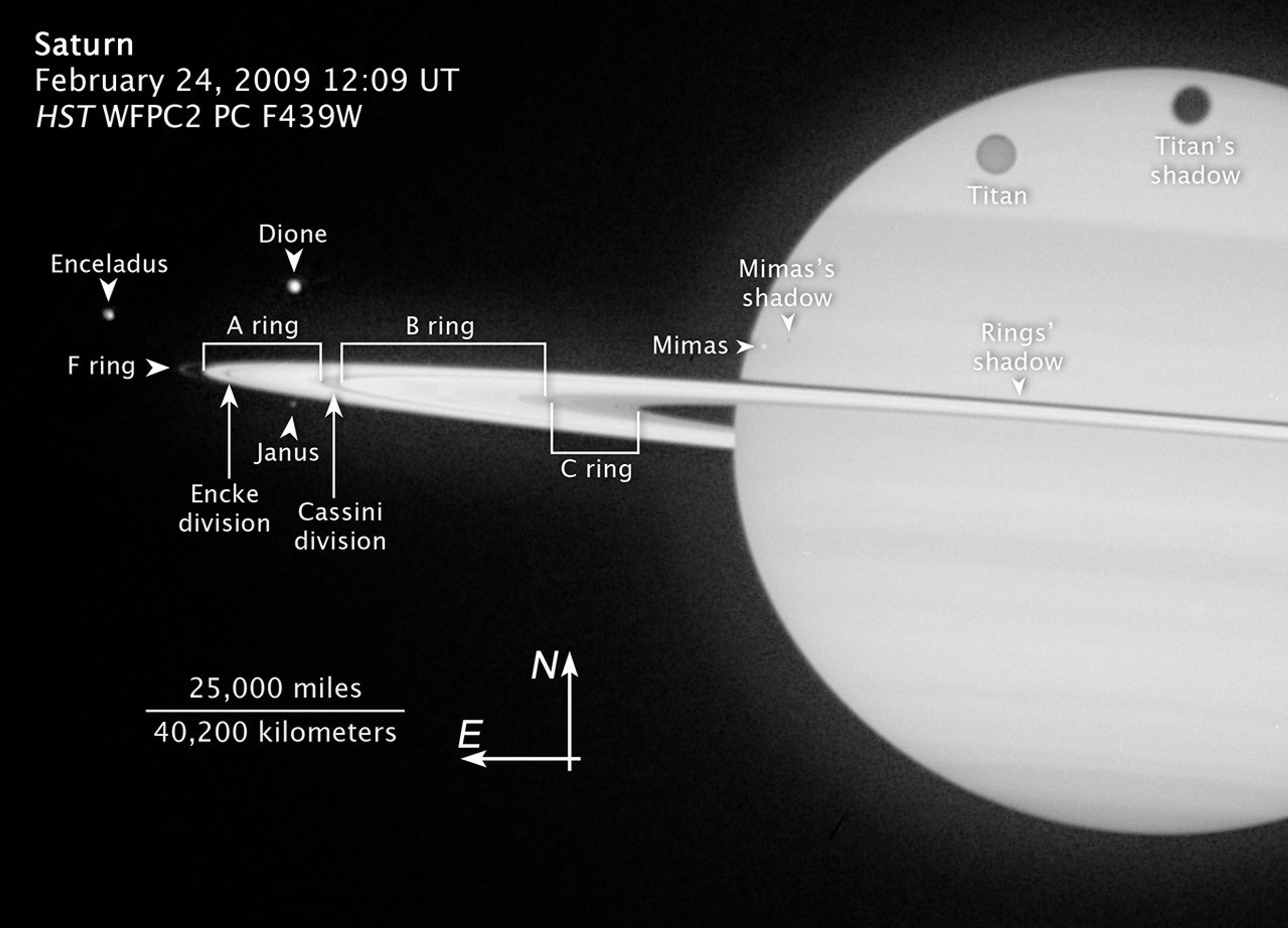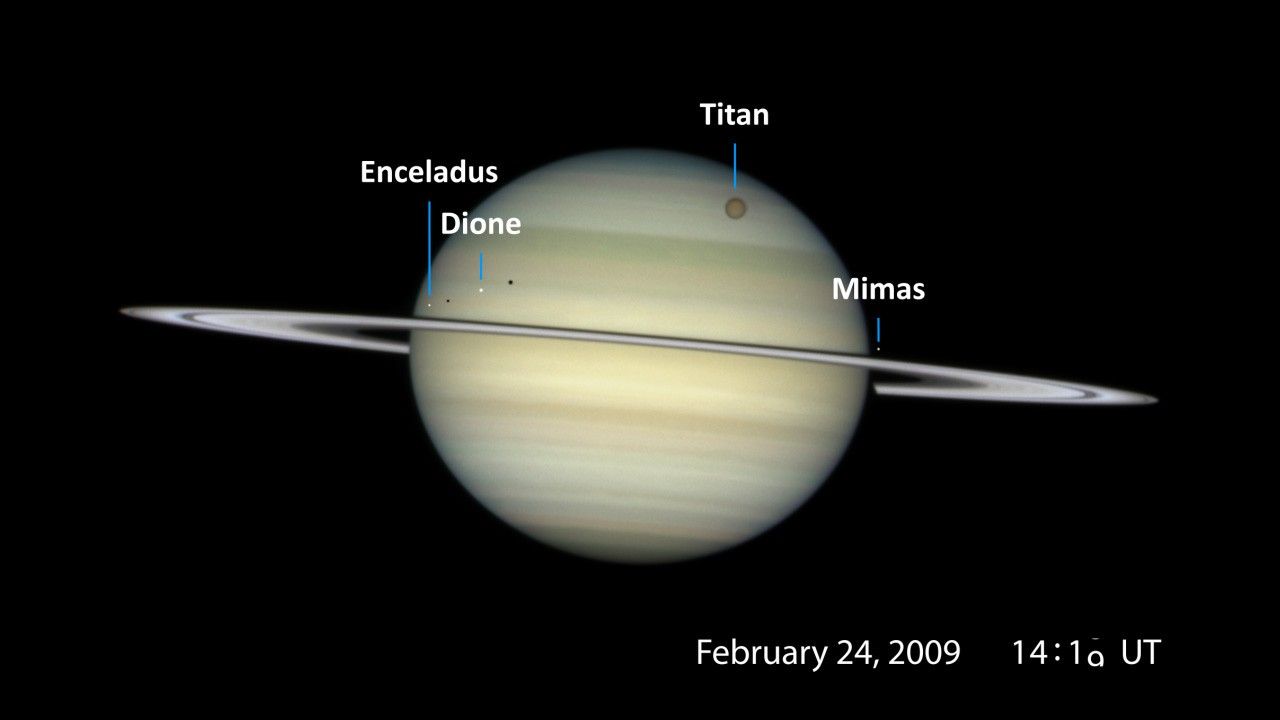1 min read
Saturn’s Rings Viewed from Earth
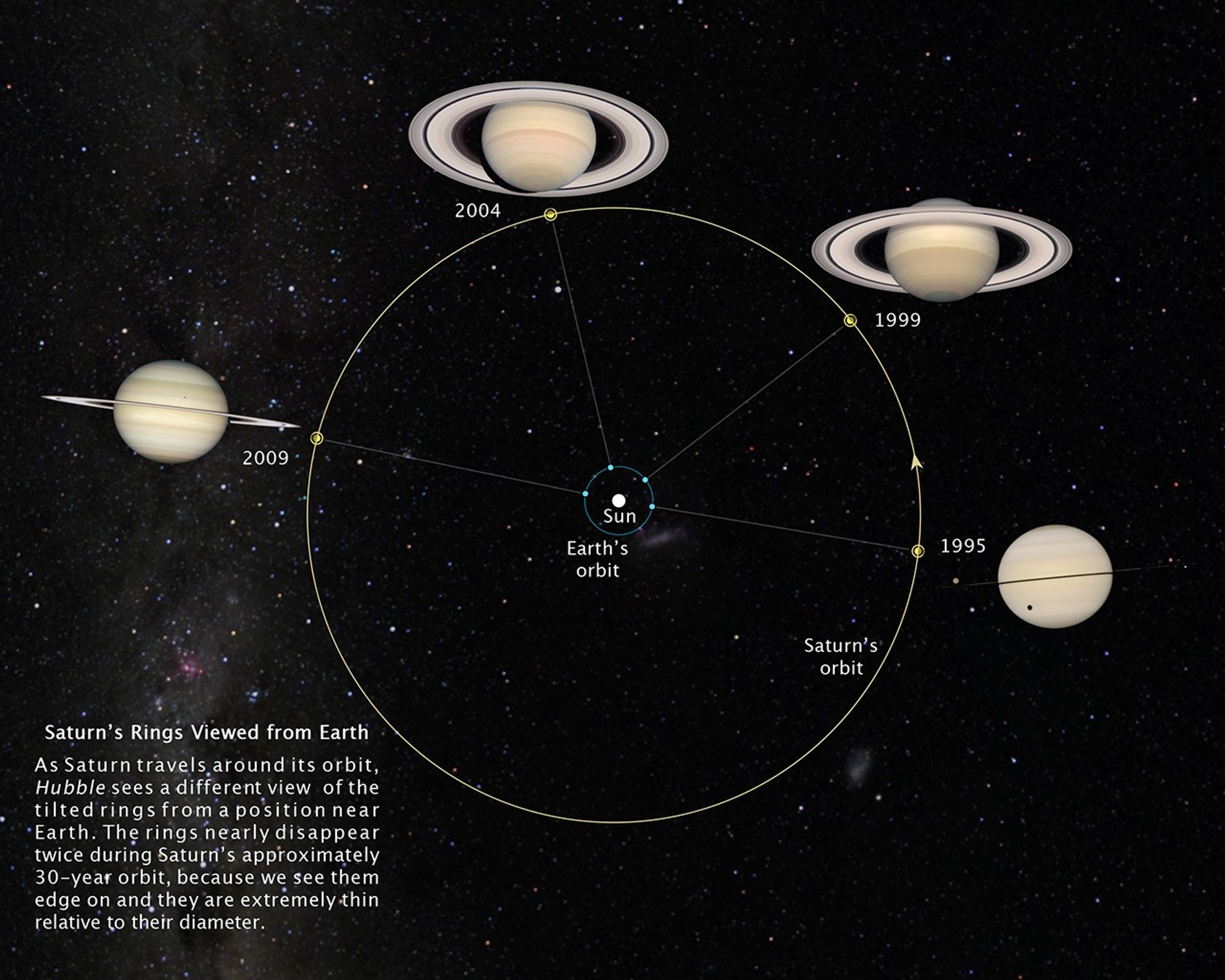
About the Object
- DistanceDistanceThe physical distance from Earth to the astronomical object. Distances within our solar system are usually measured in Astronomical Units (AU). Distances between stars are usually measured in light-years. Interstellar distances can also be measured in parsecs.The semi-major axis of Saturn's orbit about the sun is 9.5 astronomical units (A.U.) or roughly 1.4 billion km.
- DimensionsDimensionsThe physical size of the object or the apparent angle it subtends on the sky.The planet (without rings) has a diameter of roughly 75,000 miles (120,000 km) at the equator.
- Object NameObject NameA name or catalog number that astronomers use to identify an astronomical object.Saturn
- Object DescriptionObject DescriptionThe type of astronomical object.Planet with Satellites
- Release DateMarch 17, 2009
- Science ReleaseQuadruple Saturn Moon Transit Snapped by Hubble
- Credit
Related Images & Videos

Quadruple Saturn Moon Transit Snapped By Hubble
On February 24, 2009, the Hubble Space Telescope took a photo of four moons of Saturn passing in front of their parent planet. In this view, the giant orange moon Titan casts a large shadow onto Saturn's north polar hood. Below Titan, near the ring plane and to the left is the...
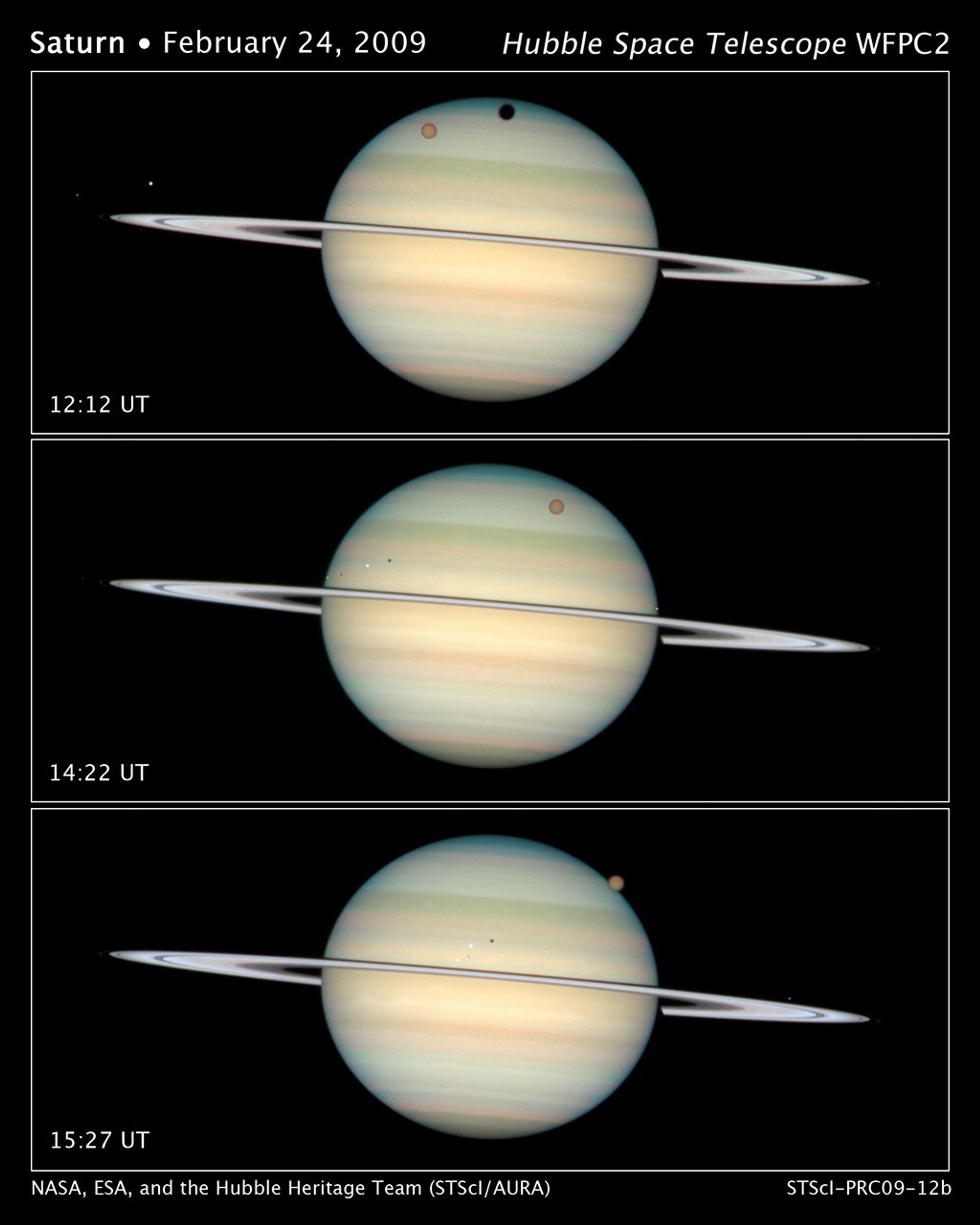
HST Image of Saturn Moon Transits
This sequence of images captures the parade of several of Saturn's moons transiting the face of the gas giant planet. This is a rare event because the rings are tilted edge on to Earth every 15 years. The top frame captures the giant moon Titan and its shadow near Saturn's...

Closeup of Quadruple Saturn Moon Transit
This close-up view of Saturn's disk captures the transit of several moons across the face of the gas giant planet. The giant orange moon Titan – larger than the planet Mercury – can be seen at upper right. The white icy moons that are much closer to Saturn, hence much closer to...
Share
Details
Claire Andreoli
NASA’s Goddard Space Flight Center
Greenbelt, Maryland
claire.andreoli@nasa.gov































